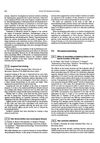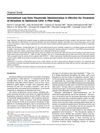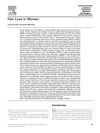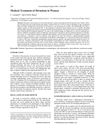Hair Cosmetic Alterations
September 1998
in “
JEADV. Journal of the European Academy of Dermatology and Venereology/Journal of the European Academy of Dermatology and Venereology
”
hirsutism antiandrogens Cyproteroneacetate Spironolactone Ketokonazole Flutamide 5α-Reductase inhibitors Finasteride acquired hair kinking circle hairs acquired pili torti corkscrew hair whisker hair diffuse partial woolly hair hair shaft alterations neurocutaneous diseases ceramides cholesterol free fatty acids laser epilation peeling treatments dyspigmentation facial hyperpigmentations epidermal melanoses hyperactive melanocytes cyproterone acetate spironolactone ketoconazole flutamide finasteride ceramides laser hair removal chemical peels
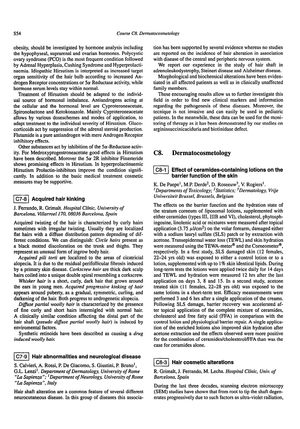
TLDR The document concludes that individualized treatments for hair issues are effective, certain hair changes can indicate neurocutaneous diseases, specific lotions improve skin health, laser hair removal works but needs more study on long-term effects, men's cosmetics are diverse, peeling is effective but can have side effects, and facial pigmentation is often due to overactive skin cells.
The document from 1998 discusses various topics related to hair and skin care in dermatocosmetology. It covers the treatment of hirsutism, which should be tailored to the individual's hormonal imbalance, with medications such as antiandrogens (Cyproteroneacetate, Spironolactone, Ketokonazole, and Flutamide) and 5α-Reductase inhibitors (Finasteride). Cosmetic measures may support medical treatment. Acquired hair kinking conditions, such as circle hairs, acquired pili torti, corkscrew hair, whisker hair, and diffuse partial woolly hair, are described with their characteristics and potential causes. The document also reports on hair shaft alterations in neurocutaneous diseases, suggesting that these alterations could serve as clinical markers and provide insight into disease pathogenesis. A study on the effect of ceramides-containing lotions on skin barrier function and hydration is summarized, showing that lotions with a mixture of ceramides, cholesterol, and free fatty acids can accelerate barrier recovery and improve skin hydration. Hair cosmetic alterations from external factors are classified into four grades of cuticular hair damage. The efficacy of laser epilation is confirmed, although the permanence of results requires further research. Men's cosmetics are briefly mentioned, covering a range of products from perfumery to hair and skin care. Peeling treatments are discussed as effective and adaptable, with a cautionary note on the potential for adverse effects such as dyspigmentation. Lastly, facial hyperpigmentations are mentioned, with a focus on epidermal melanoses caused by hyperactive melanocytes.
